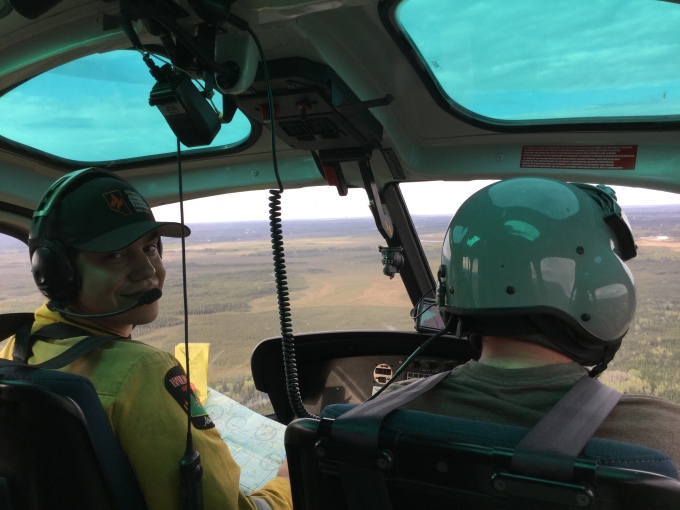Away From the Fireline
Hello and welcome back – my name is Josh and this summer I will be giving you a window into the daily life of a firefighter in the field. It has been a long, dry winter and I am very excited to be back in the field doing what I love. Do you ever wonder what wildland firefighters do when they’re not working on a wildfire? I’d like to talk today about the training we do when we’re away from the fireline.

This will be my sixth season as a wildland firefighter. What keeps me coming back? The constant adventures out here are what make this job so much fun. There is also a lot of friendly competition among the crews out here in Lac La Biche over things like who can get the better time on certain drills, or who can get out to the most fires.
When we’re in camp with no wildfires in the area, the man-up supervisors like to keep us on our toes with drills that test our pump proficiency, fireline construction abilities or GPS mapping skills. These activities keep us sharp in the event that we get dispatched to a wildfire, but help to ensure that we’re able to perform the tasks in a safe and professional manner too. “Slow is smooth and smooth is fast,” they’ll often say. Our supervisors will always have our backs and I am proud to work for these individuals.
It’s my second year as a Helitack member and I continue to learn new things each day. To me, there is nothing like learning from your supervisors and the others who have spent many years out here on the fireline. My crew leader is one of many supervisors that help keep our training fresh and frequent. From equipment and GPS proficiency, to paper work and communication exercises, he always seems to have something up his sleeve. When we go out on loaded patrols with the helicopters, he gives us the chance to ride up front with the pilot and take care of operations. This is where we apply our mapping and communications skills and our GPS training. There is a fair bit more that happens on patrols and dispatches, but I will save that for another of my blog posts this season.
At times, we also get to work with pilots and their helicopters doing things like bucket training, where we can do live water drops. In cases like these, it’s training for both us and the pilots. We have the opportunity to hook the bucket up to the belly of the helicopter while the pilot hovers overhead. This is another great experience, but we must stay cautious and situationally aware of our surroundings to avoid potential injury. Once connected, we can start performing drops with the pilot, who can do either spot or line drops depending on the situation. We stay on the ground and communicate over the radio with the pilot. It is a truly great experience to be able to work with pilots and their amazing machines.

Another example of the training we do is when we were exported to our neighboring district of Slave Lake to do our “hover exit” training and certification. The live exits and entries with the helicopter are nerve racking because it is very loud, very windy and extremely dangerous. Hand signals are used because hearing protection must be worn at all times. This is where communication and observation with your crew leader and pilot are important. It feels like it takes five minutes when you’re doing the drills, but it’s really only a matter of a few seconds once you get your hands on the helicopter. It’s such an exhilarating feeling climbing in and out of a hovering helicopter. We really feel the adrenaline coursing through our bodies when this is happening, however we do our best to stay calm and focused.
I would like to thank Alberta Agriculture and Forestry again for the opportunity to be one of the many Firefighters in the Field this season. That is a little run down of what we do out here when we are not out fighting wildfire. Thank you for reading and keep your eye out for more blogs and photos from the Firefighters in the Field!
Remember: “Slow is smooth and smooth is fast.”
-Josh





Leave a comment